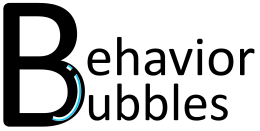Due to Covid-19, many countries have taken measures to stop the spread. Some of these measures include instructing their employees to work from home, and allowing children to study from home.
A way to help with the successful transition of working and/or studying from home can be through doing some environmental modifications. Research has shown that environmental modifications can help to increase active engagement and decrease challenging behaviors (Boggs, 2016; Guardino & Fullerton, 2010 ).
Environmental Modifications can include the following: Setting up a conducive study/work environment; providing clear expectations; and allowing the learner to be successful.
___________________________________________________________
Setting Up a Conducive Environment
A) Utilise an appropriately sized table and chair that is comfortable for the learner.
B) Define the area of work/study (i.e. separate from the area for play)
C) Limit the number of distractors present by tidying up the work/study environment. This can be done via cleaning up the table and/or locking access to entertainment sites during work/ study times.
D) Provide easy access to commonly used materials (i.e. pencil, pen, eraser, paper).
___________________________________________________________
Provide Clear Expectations
A) Utilise a visual schedule to show the tasks which need to be completed.
B) Set a timer for work and provide a reinforcer/ take a break when the timer goes off.
C) Utilise a first-then strategy (i.e. first work, then play)
D) Provide the learner choices of what they can earn when the work is completed.
___________________________________________________________
Allow the Learner to be Successful
A) Break down a complex task
Example 1: Should the task assigned be to build a complex structure (i.e. make a dog using play dough), the task can be broken down into modelling each step and/or providing a visual prompt as to which parts are needed to be completed (i.e. body, eyes, legs, tail etc.) before combining the parts to create the finished product.
Example 2: Should the task assigned be to copy the a sentence, the task can be broken down to copying each word individually or each letter individually according to the level of the learner.
B) Simplify a Task According to the Learner’s Level
Example 1: Should the learner have difficultly holding a pencil, allow them to use a thicker pencil, or a crayon, or a marker to trace instead.
Example 2: If the learner is unable to count pictures shown to them, allow the learner to count using objects instead.
____________________________________________________________
These are some examples of environmental modifications that you can do to help improve your learning and working environment for yourself and your learner. Each modification should be modified according to what is best for the learner.
Feel free to comment below stating some of the modifications you have made to help improve the working/learning environment.
Happy Teaching!
___________________________________________________________
References
Boggs, T. L. (2016). The Effetcs of Environmental Modifications and Visual Supports in the Hom eon Engagement and Challenging Behaviors in Children with Autism. Electronic Theses and Dissertations. Paper 3099. https://dc.etsu.edu/etd/3099/
Guardino, C. A., & Fullerton, E. (2010). Changing Behaviors by Changing the Classroom Environment. Teaching Expectational Children, 42(6), 8-13. https://www.uvm.edu/~cdci/best/pbswebsite/Resources/ChangingBehaviors.pdf

